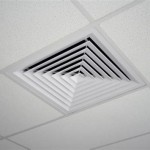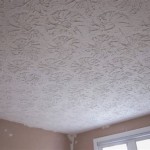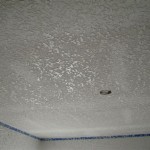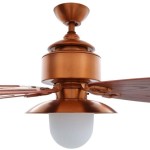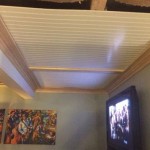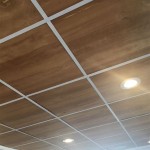False Ceiling Meaning: An In-Depth Exploration
A false ceiling, also known as a suspended ceiling, dropped ceiling, or T-bar ceiling, is a secondary ceiling installed below the main structural ceiling of a room or building. This architectural element serves purposes beyond simply covering up unsightly structural components; it's a design feature that impacts acoustics, lighting, insulation, and overall aesthetics of a space.
The term "false ceiling" itself highlights the distinction between the visible, lower ceiling and the actual, load-bearing structure above. This space between the two ceilings, often referred to as the plenum, is where various building services like wiring, ductwork, and plumbing are discreetly housed, contributing to a cleaner and more organized visual appearance.
Historically, false ceilings were primarily employed in commercial buildings, offices, and retail spaces. However, the benefits they offer, coupled with advancements in materials and design, have led to their increasing popularity in residential settings. They provide a versatile solution for modernizing interiors, concealing imperfections, and improving the comfort and functionality of living spaces.
The construction of a false ceiling typically involves suspending a grid framework from the main ceiling using wires or hangers. This grid is then filled with lightweight panels made from various materials, creating the visible ceiling surface. The modular nature of these systems allows for easy installation, maintenance, and modification.
Acoustic Benefits of False Ceilings
One of the most significant advantages of installing a false ceiling is its ability to improve the acoustic properties of a room. Sound waves can reverberate and bounce off hard surfaces, leading to echoes and a general increase in noise levels. False ceilings, particularly those constructed with sound-absorbing materials, effectively dampen these sound waves.
Acoustic ceiling tiles are designed with specific textures and compositions that trap and dissipate sound energy, reducing reverberation time and enhancing speech intelligibility. This is particularly beneficial in environments where clear communication is crucial, such as offices, classrooms, and conference rooms.
The degree of sound absorption provided by a false ceiling is measured by its Noise Reduction Coefficient (NRC). A higher NRC value indicates better sound absorption. When selecting a false ceiling for acoustic purposes, it's important to consider the NRC rating and choose materials appropriate for the specific application and noise levels.
Furthermore, the plenum space itself can contribute to acoustic performance. Filling the plenum with insulation or sound-absorbing materials can further reduce noise transmission between floors, creating a quieter and more productive environment.
Lighting Integration and Energy Efficiency
False ceilings offer a convenient and aesthetically pleasing way to integrate lighting fixtures into a space. Recessed lighting, such as downlights and spotlights, can be seamlessly installed within the ceiling grid, providing uniform and glare-free illumination. This eliminates the need for bulky surface-mounted fixtures and creates a cleaner, more modern look.
The ability to strategically position lighting fixtures within the false ceiling allows for targeted illumination of specific areas, enhancing functionality and visual appeal. For example, accent lighting can be used to highlight architectural features or artwork, while task lighting can be directed towards workstations or reading areas.
Beyond aesthetics, false ceilings can also contribute to energy efficiency. The plenum space can be used to house efficient LED lighting systems, which consume significantly less energy than traditional incandescent or fluorescent bulbs. Furthermore, the insulating properties of certain false ceiling materials can help to reduce heat loss in the winter and heat gain in the summer, lowering energy consumption for heating and cooling.
The reflective properties of the ceiling panels themselves can also play a role in energy efficiency. Light-colored panels reflect more light, reducing the need for artificial lighting and lowering energy bills. This is particularly beneficial in large, open spaces where natural light is limited.
Aesthetic Versatility and Design Options
False ceilings are available in a wide range of materials, textures, and colors, offering designers and building owners immense flexibility in creating visually appealing and functional spaces. From classic mineral fiber tiles to modern metal panels and intricate gypsum board designs, the options are virtually limitless.
Mineral fiber tiles are a popular choice for commercial applications due to their affordability, acoustic performance, and fire resistance. Metal panels offer a sleek and contemporary aesthetic, while gypsum board allows for more complex and customized designs. Wood and fabric panels can add warmth and texture to a space, creating a more inviting atmosphere.
The modular nature of false ceilings also allows for easy customization and modification. Individual panels can be replaced or reconfigured as needed, making it easy to adapt the ceiling to changing needs or preferences. This is particularly beneficial in retail environments where designs may need to be updated frequently.
Furthermore, false ceilings can be designed to incorporate architectural features such as bulkheads, coves, and suspended elements, adding visual interest and creating a more dynamic and engaging space. The possibilities are limited only by imagination and budget.
Beyond the aesthetic considerations, the choice of materials for a false ceiling should also take into account factors such as durability, maintenance requirements, and environmental impact. Selecting sustainable and long-lasting materials can reduce the overall lifecycle cost of the ceiling and minimize its environmental footprint.
In summary, the "false ceiling meaning" encompasses a functional and aesthetic architectural element designed to enhance the performance and appearance of interior spaces. Its ability to improve acoustics, integrate lighting, and offer design versatility makes it a valuable asset in both commercial and residential settings.

False Ceiling Definition Benefits And Various Types Happho

False Ceiling Definition Benefits And Various Types Happho

What Is False Ceiling Contractorbhai

False Ceiling Types Of Panels Or Tiles Commonly Used In And Their S The Economic Times

False Ceiling Types Uses Advantages Disadvantages

False Ceiling क य ह करत All About Series

Things To Know About A False Ceiling Avisun Properties

Types Of False Ceilings And Its S The Constructor

False Ceilings Types Advantages And Its Materials
What Is The Difference Between A False Ceiling And Drop Quora
Related Posts

